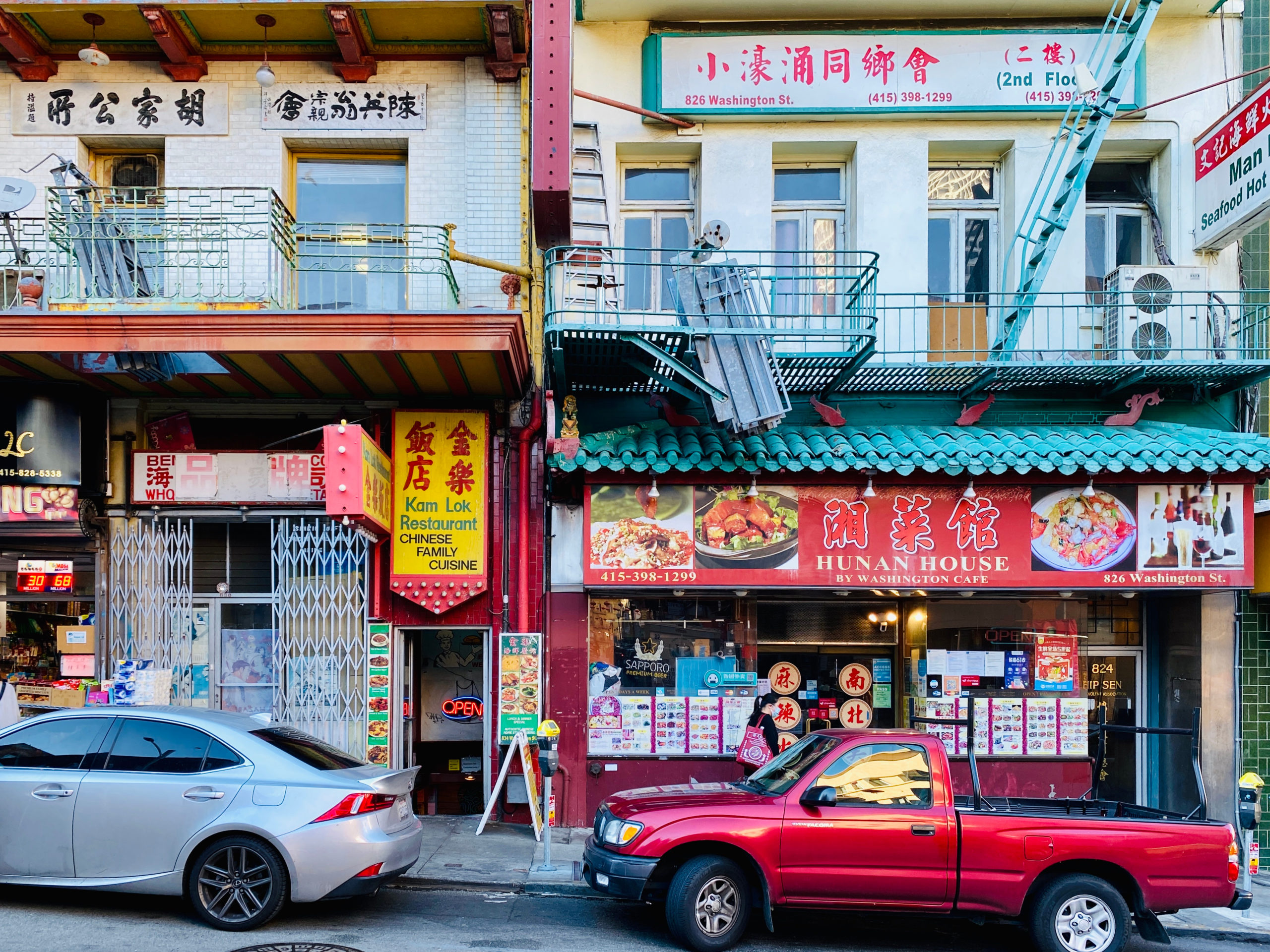Chinatown is lagging behind every other San Francisco neighborhood in terms of vaccinating its senior population, according to an analysis conducted by Here/Say Media and affirmed by the San Francisco Department of Public Health.
“I’m shocked,” Jian Zhang, CEO of Chinese Hospital, said in response to Here/Say’s reporting, which shows Chinatown is the only neighborhood in San Francisco to have vaccinated fewer residents than the estimated number of seniors eligible.
“Chinatown is the second most densely populated area in the nation. So it’s very important that we vaccinate [residents] as soon as possible,” Zhang said.
San Francisco’s Department of Public Health (SFDPH) provides neighborhood-level data on vaccinations, including the total number and percent of residents by neighborhood that have received at least one dose of the vaccine. In Chinatown, 32% of residents are at least partially vaccinated. In comparison, 47% of Japantown residents have received one or more doses, and 13% of Treasure Island’s residents have gotten at least one shot.
At first glance, Japantown would appear to be the best-performing neighborhood in vaccination rates and Treasure Island seems to be doing poorly. But these figures don’t tell the full story. The percentages can reflect neighborhood demographics, said Dr. Albert Yu, SFDPH’s chief health information officer.
At this stage of the vaccine rollout, a neighborhood with a lot of young people is likely “going to show very low saturation” of vaccinations, he said, which is actually a good sign as the vaccine is not yet widely available to people under 65. Otherwise, “it would be line cutting.” For example, while Treasure Island has only vaccinated 13% of residents, just 5% are 60 or older.
Chinatown’s vaccination rate (32%) seems to put the neighborhood inconspicuously in the middle of the pack. But when you take into account that 35% of Chinatown’s population is elderly, it reveals that the community has fallen behind, a finding that has been largely left out of the conversation.
SFDPH says it’s been monitoring the situation since mid-February. “We are absolutely aware of Chinatown,” said Yu, though the department doesn’t have enough data yet to explain why Chinatown has slipped, including whether seniors are choosing to wait to be vaccinated, are being overlooked or some combination of the two.
“Right now, we don’t have that level of granularity in our data. We want to get there,” Yu said.
But when it comes to vaccines, one theory is that the same behavior that helped prevent the spread of COVID-19—staying home—might now be hindering vaccine rollout.
“The 65 and up… they’re not working,” said Zhang. “Some of them are saying that [they don’t need the vaccine] because they’re not going out.”
Another theory is that misinformation about vaccines is spreading over social media platforms like WeChat. “If there’s misinformation, then it’s really fixing our public health messaging to make sure we can shift people’s behavior to receive a vaccine,” said Yu.
Zhang emphasized that accessibility isn’t likely the barrier to vaccination. Chinese Hospital alone offers vaccinations five days a week at multiple locations. In addition to other providers, pharmacies offer the vaccine and SFDPH runs a community clinic in the neighborhood.
Meanwhile, Yu said SFDPH is working to identify seniors who may have been missed.
“We have a list of senior housing facilities and SROs in Chinatown and are in the process of connecting with the building operators to ensure we reach every eligible resident and encourage them to get vaccinated or, in some cases, arrange to bring our mobile [vaccine] team to them,” he wrote in an email.
But with the spate of high-profile attacks on Asian Americans this week, Yu, Zhang and city officials fear Chinatown’s seniors won’t want to leave their homes and may fall even further behind.
On a personal level, Yu can relate. “I usually like to do a night walk. But my wife, she was like, ‘Don’t go out so late,’” he said. “So I can only imagine how a 65-year-old or 75-year-old might feel.”
This week, Yu was shocked to see the bruised face of one of his patients, Xiao Zhen Xie, on T.V. “The woman that was punched and ended up beating up the other guy and sending him to the hospital the other day? She’s my patient. I didn’t realize it, and then I saw it on the news.”
“We really need to take action to help our community,” said Zhang. “To give people a sense of security. The hate crimes have to stop so we can work together and get out of this pandemic.”
Our Methodology
Statistics for San Francisco’s neighborhoods were pulled from two data sources: DataSF’s COVID-19 Vaccinations dashboard and the San Francisco Planning Department’s Neighborhoods Socio-Economic Profiles report on March 16, 2021.
DataSF provides the percentage of neighborhood residents who received at least one dose of the vaccine and the Neighborhoods Socio-Economic Profiles report provides a percentage of the number of individuals 60 and up. We use the latter as a proxy for estimating the number of individuals eligible by neighborhood. As of publication of our data analysis, residents of long-term care facilities, like nursing homes, and people over 65 are eligible for the COVID-19 vaccine and were among the first groups able to receive the shot.
This proxy metric is inherently an underestimation of eligibility; when the data was collected and analyzed, individuals who are healthcare workers, education and childcare workers, emergency services workers and food and agriculture workers were also eligible.
DataSF uses the 2018 Five-Year American Community Survey for its population statistics and the San Francisco Neighborhoods Socio-Economic Profiles uses the 2016 Five-Year American Community Survey. Numbers from the American Community Survey are estimates and are subject to sampling errors.
